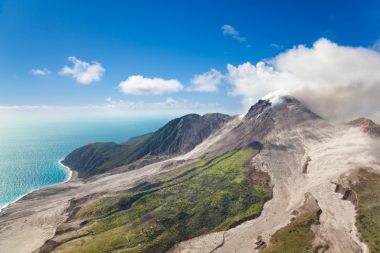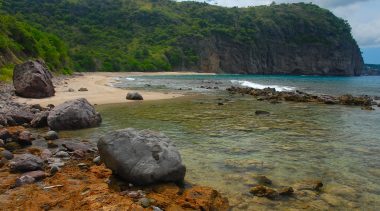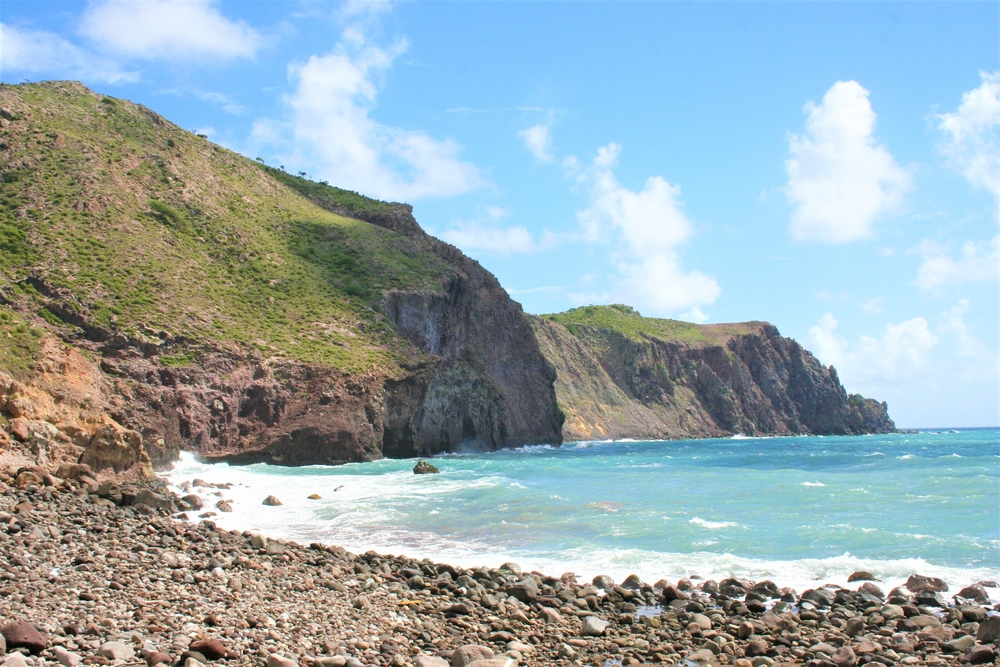The nickname of this still relatively unknown Caribbean island says a lot about the small island that lies between Antigua and Guadeloupe and belongs to the Lesser Antilles . Montserrat is an overseas territory of the United Kingdom, part of the Commonwealth and part of the Leeward Islands.
The volcanic Montserrat

From the air, Montserrat impresses with its lush green, tropical vegetation and the three volcanic massifs. A distinction is made between the Silver Hills in the north, the Centre Hills in the interior of the island and the Soufrière Hills in the south. Soufrière is one of the most active volcanoes in the Caribbean and is known for a series of disastrous eruptions in 1995 and 1997. At that time, the capital Plymouth was almost completely buried by a devastating river of ash and is therefore often referred to as a modern Pompeii . About two-thirds of the approximately 12,000 inhabitants at the time had to leave Montserrat for security reasons – the entire southern part of the island was declared a restricted zone.
Today, the Soufrière is the main attraction of the country. Although Montserrat is still one of the lesser-known destinations, many adventurers and eco-tourists now come here for hiking and bird watching. The country has thus developed into an alternative destination for nature lovers in the Caribbean and is a counterpart to the many other islands with their luxurious all-inclusive hotel complexes.
The fantastic landscape of Montserrat
The small Caribbean island of Montserrat is only 16.5 km long and a maximum of 10 km wide and has undergone an immense change due to the devastating volcanic eruptions in the 1990s. Since there were hardly any houses left in Plymouth, a new de facto capital, Brades, was created on the northwest coast. Montserrat has both tropical rainforests and dry forests. Small paths crisscross the island, which have been walked by the locals for centuries and are now popular paths for trekking tourists. Especially in the Centre Hills area, you walk past exotic plants, see banana trees, mangoes and papayas along the way and are surrounded by the impressive concert of birds.
Activities
Most tourists who decide to spend their holidays on Montserrat are nature lovers who are enthusiastic about the extraordinary volcanic landscape and the unique flora and fauna. At the moment, the surroundings of the still active Soufrière volcano are not allowed to be entered, but from the observation deck of the observatory, visitors can get a spectacular view of the mountain with the crater. They also have the opportunity to experience images and sounds of the eruption up close during a video show. There are also guided tours of buried Plymouth, which is considered the only capital without inhabitants in the world. The feeling of roaming the ash-covered streets is exciting but a bit spooky for most guests, as the catastrophe that befell the area was not long ago and is therefore intensely felt.
The tropical forests of Montserrat are home to countless species of birds, reptiles and amphibians. It is advisable to take part in a tour in order to be able to see as many of the exotic animals and plants as possible with the expert nature guides along the way. With a bit of luck, you might even be able to spot the island’s national bird, the oriole, which hides in the humid rainforests.
The beaches of Montserrat

The beaches on Montserrat are, with one exception, covered with black lava sand. Only at the so-called Rendezvous Bay is there light coral sand. Although many holidaymakers consider it to be the most beautiful stretch of coastline on the island, it is never crowded and there is always enough space. The water here is generally very calm and clear, so it is wonderful for snorkeling. In general, it can be said that the underwater world scores with colorful reefs and exotic fish and Montserrat is therefore also a great destination for divers. The small bay of Little Bay is particularly popular with sailors and so various shops, bars and restaurants have settled here. Along the west coast there are several wonderfully lonely dark sandy beaches, including Woodlands Beach and Carr’s Bay.
General travel information
The island has a tropical climate, so rainfall must be expected throughout the year. The rainy season is between July and November, while the months from February to April are called the dry period. The temperatures are relatively stable and only fluctuate between 23° and 30° C – Montserrat can be visited at any time, but if you would like to hike, it is best to choose the time between January and May, as the paths are much easier to walk on then.
The journey to Montserrat is usually via Antigua, which is served directly from several European airports. Afterwards, you can either take a ferry or take a twenty-minute onward flight to Montserrat.
If you spend your holidays on Montserrat, you should definitely try the national dish Goat Water. The hearty stew with goat meat was probably brought from their homeland by the Irish, who are considered the first settlers of this British territory.
If you are interested in spectacular landscapes as well as exciting flora and fauna and have a thirst for adventure, you will certainly spend an unforgettable dream holiday in the tiny Caribbean state.


